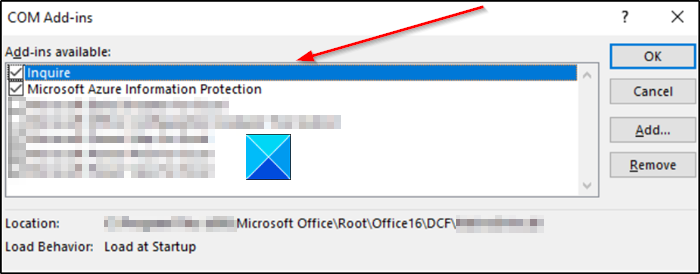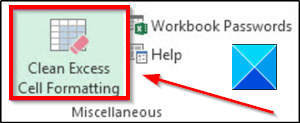Whenever you close a Microsoft Excel file and re-open it, the file, by default, jumps to the last cell containing data or formatting. However, you can create a macro if you do not like this default behavior. It will automatically reset the last cell on an Excel file for you. See, how to proceed with it.
Reset the last cell on an Excel worksheet
When you revise your Excel file and attempt to save it, the app, in addition to revisions, also saves any part containing data or formatting. As such, any empty cells containing formatting and lying outside the range of cells containing data may be included. This may increase the file size of the workbook. It may also result in more printed pages when you print the workbook. To avoid this, reset that last cell by switching to the Clean Excess Cell Formatting command on Excel’s Inquire tab.
- Go to File
- Select Options.
- Choose Add-ins.
- Select COM Add-ins in the Manage
- Check Inquire
- Under the Inquire tab, select Clean Excess Cell Formatting.
Let’s see the process in a bit of detail!
Go to the File tab on the Ribbon menu of your Excel file.
Click the File tab to go to Options (visible at the bottom of the sidebar).
When the Excel Options window opens, choose Add-ins option in the sidebar.

Then, select COM Add-ins from the Manage box on the right.

Look for the Inquire add-in, select it and then click OK. The Inquire tab should now be visible in the ribbon.

To remove the excess formatting from your current Excel file, go to the Inquire tab and choose the Clean Excess Cell Formatting option.
Once excess formatting is removed, click Yes to save changes and exit.
It is advisable to create a backup copy of the existing file before making the changes since quite a few cases have been reported where the process increased the file size, and there was no way to undo the change.
Read next: How to find the percentage change in Excel?
I hope this helped.
Leave a Reply